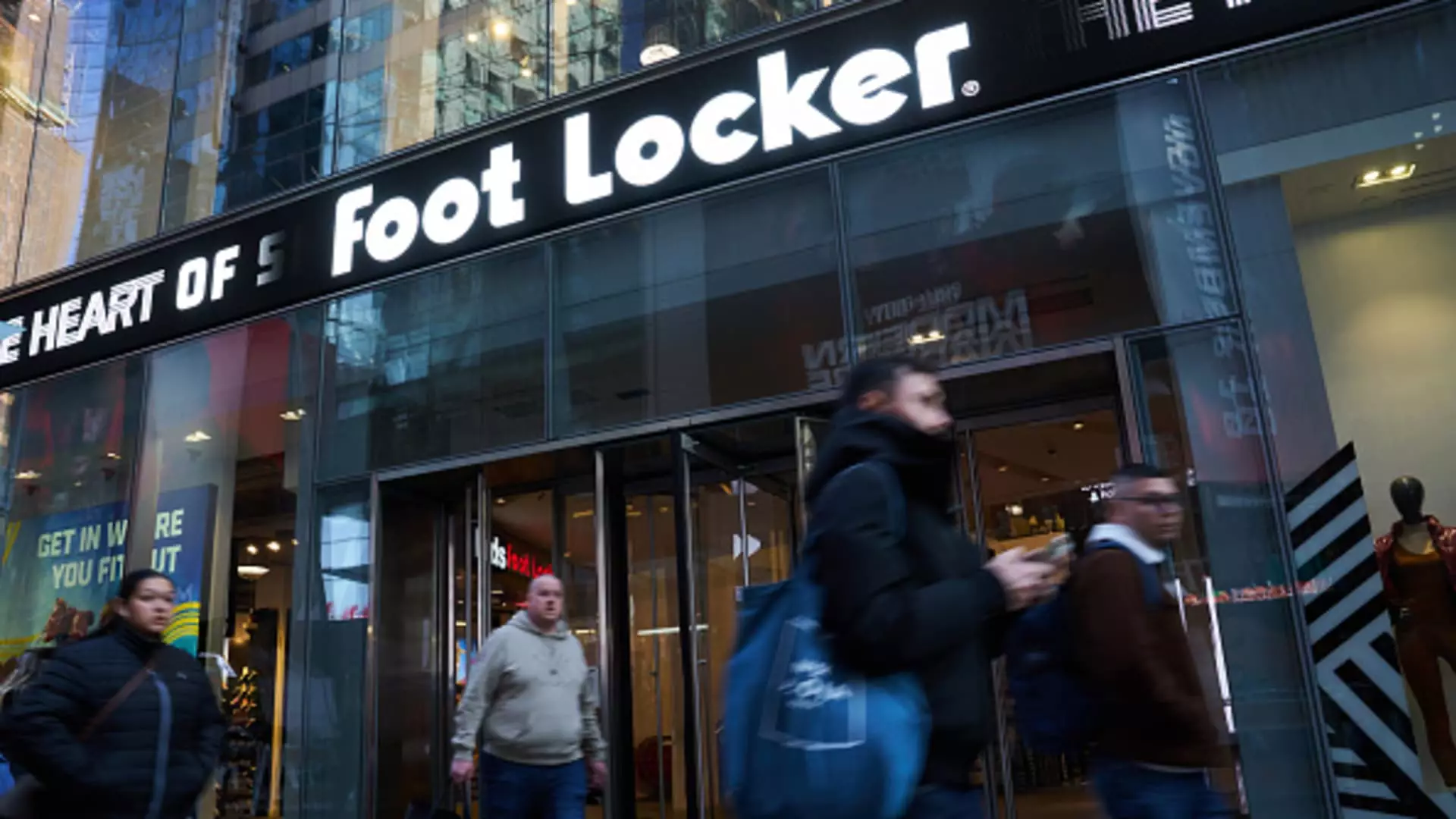Despite facing a challenging retail environment, Foot Locker managed to surprise analysts by posting a same-store sales growth of 2.6% in its fiscal second quarter. This positive development marks a significant turnaround for the company, which had struggled with declining sales for the past six quarters. The increase in comparable sales can be attributed to Foot Locker’s efforts to revamp its stores and enhance the overall customer experience, signaling that its strategic initiatives are beginning to yield results. However, despite this encouraging performance, the company’s shares fell by about 8% in premarket trading, highlighting the volatile nature of the retail sector.
In terms of financial metrics, Foot Locker outperformed Wall Street’s expectations with a loss per share of 5 cents, adjusted for one-time items, compared to the anticipated 7 cents. Additionally, the company reported revenue of $1.90 billion, surpassing the projected $1.89 billion. While Foot Locker still recorded a loss of $12 million in the three-month period that ended on August 3, it showed improvement from the previous year’s loss of $5 million. The positive revenue growth and better-than-expected earnings indicate that Foot Locker’s turnaround strategy, known as “The Lace Up Plan,” is gaining traction.
Under the leadership of CEO Mary Dillon, Foot Locker has undertaken a series of strategic initiatives aimed at revitalizing its brand and adapting to the changing retail landscape. Dillon’s focus on strengthening the company’s relationship with key brand partner Nike, coupled with investments in store renovations and product offerings, has positioned Foot Locker for long-term success. The decision to close stores and e-commerce operations in select markets, while expanding in others, underscores Foot Locker’s commitment to operational efficiency and growth.
One of the key drivers of Foot Locker’s transformation has been its emphasis on innovation and collaboration. The retailer’s partnership with Nike in developing new megastores highlights its commitment to delivering a unique and immersive shopping experience for customers. By leveraging consumer insights and embracing digital technology, Foot Locker is able to enhance its product offerings and engage with shoppers in a more meaningful way. Dillon’s relentless focus on driving profitability and operational excellence is reflected in the company’s decision to move its global headquarters to St. Petersburg, Florida.
As consumer preferences and shopping habits evolve, Foot Locker remains committed to meeting the changing needs of its core customer base. By improving stores, products, and online shopping capabilities, the company aims to stay ahead of the competition and deliver value to its customers. Despite the challenges posed by inflation and high interest rates, Foot Locker’s ability to drive sales and maintain a strong brand presence suggests that its strategies are resonating with consumers.
Foot Locker’s recent performance signals a promising trajectory for the company as it navigates a complex and rapidly changing retail landscape. By focusing on customer experience, operational efficiency, and strategic partnerships, Foot Locker has positioned itself for sustainable growth and long-term success. As the company continues to adapt to market dynamics and evolving consumer preferences, its ability to innovate and execute effectively will be crucial in maintaining its competitive edge in the industry.

